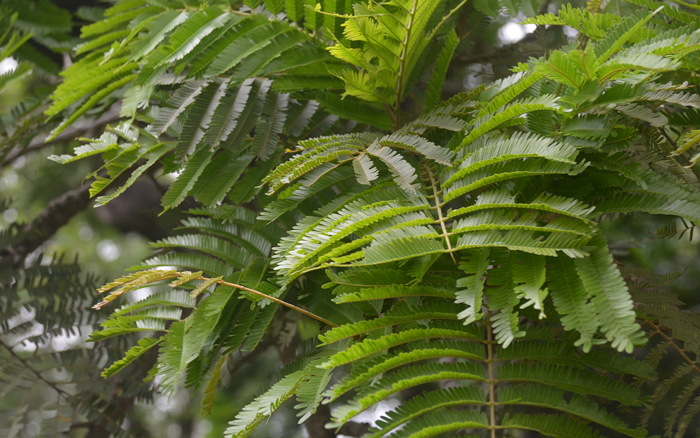The West African locust tree, scientifically known as Parkia clappertoniana, is a remarkable tree native to the tropical regions of West Africa. This majestic tree, with its unique features and ecological significance, plays a vital role in the ecosystems and the lives of the people in the region.
Standing tall and proud, the West African locust tree can reach heights of up to 30 meters, with a broad canopy that provides ample shade beneath. Its trunk is sturdy, covered in rough, dark gray bark, which protects it from the elements. The branches sprawl outwards, adorned with compound leaves comprised of numerous leaflets. These leaves provide shelter for a myriad of creatures, including birds, insects, and small mammals.
One of the most remarkable aspects of the West African locust tree is its extraordinary and fragrant flowers. They appear in large clusters, resembling delicate balls of yellow to orange-hued blossoms. The scent emitted by these flowers is enticing and draws various pollinators, such as bees and butterflies, ensuring the continuation of the tree’s life cycle.
The ecological significance of the West African locust tree extends beyond its beauty. It is known as a nitrogen-fixing tree, which means it has the ability to convert atmospheric nitrogen into a form that can be used by plants. This process enriches the soil and enhances its fertility, promoting the growth of surrounding vegetation. As a result, the West African locust tree acts as a natural provider of nutrients and plays a crucial role in maintaining the balance of the ecosystem.
Moreover, the West African locust tree bears large, pod-like fruits, reminiscent of elongated beans. These fruits are edible and serve as a valuable food source for both humans and wildlife. They are commonly used in traditional West African cuisine, where they are often dried, roasted, or ground into a nutritious flour. The pods also play a role in traditional medicine, as they are believed to possess various healing properties.
Beyond its ecological and culinary significance, the West African locust tree holds cultural importance in the lives of the local communities. It has been intertwined with the traditions, folklore, and daily practices of the people in the region for centuries. The tree’s wood is highly valued and used in the construction of houses, furniture, and tools. Its bark and leaves are employed for their medicinal properties, treating ailments and providing relief.
The West African locust tree, Parkia clappertoniana, is a true gem of the West African landscape. It stands as a testament to the resilience of nature and the interconnectedness of all living things. From its majestic stature to its fragrant flowers, nutrient-enriching properties, and versatile fruits, this tree embodies the essence of beauty, utility, and cultural significance. It is a true gift to the people and the environment, a symbol of the harmony that exists between humanity and the natural world.


